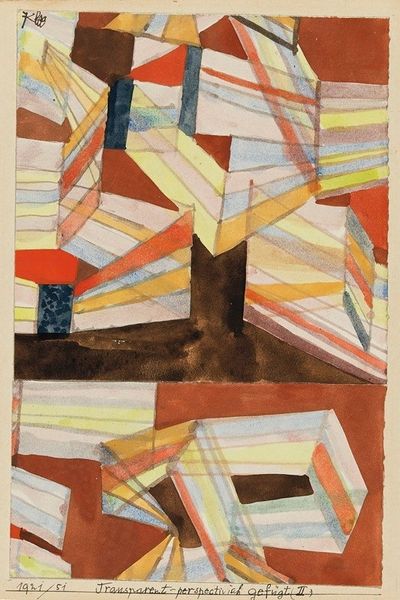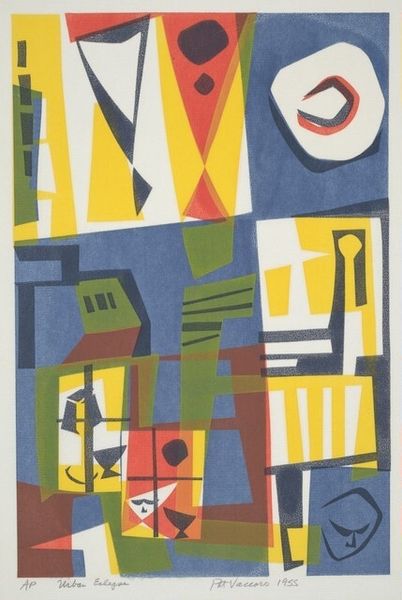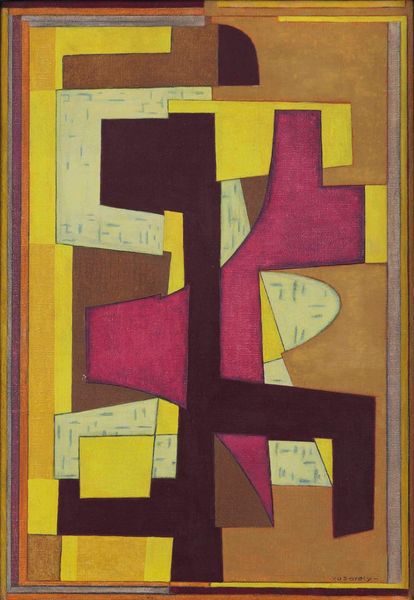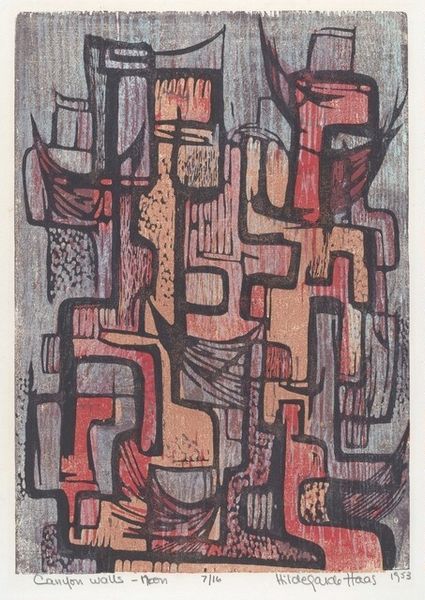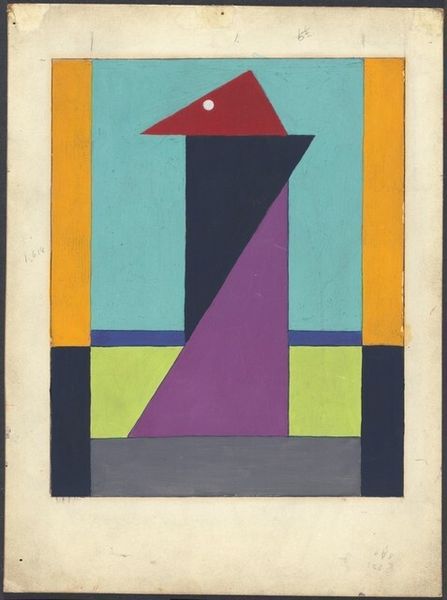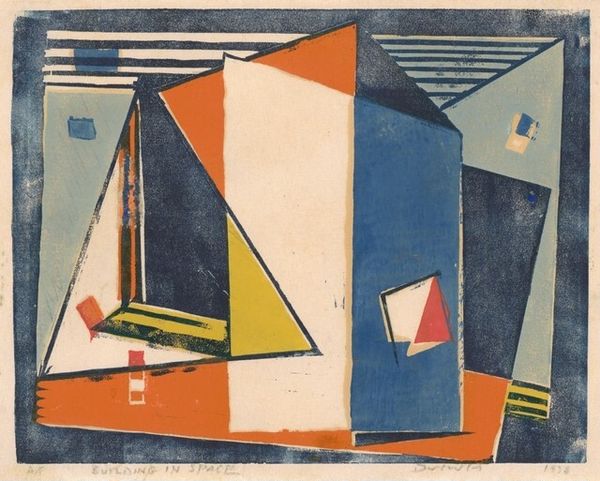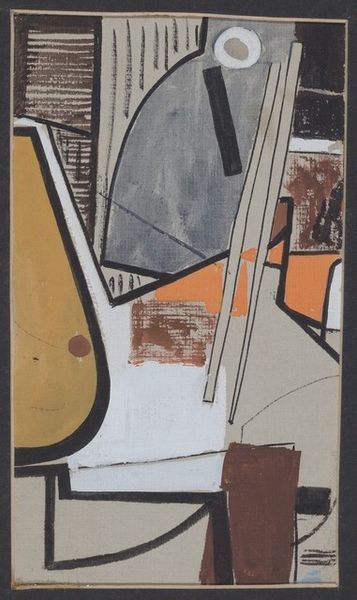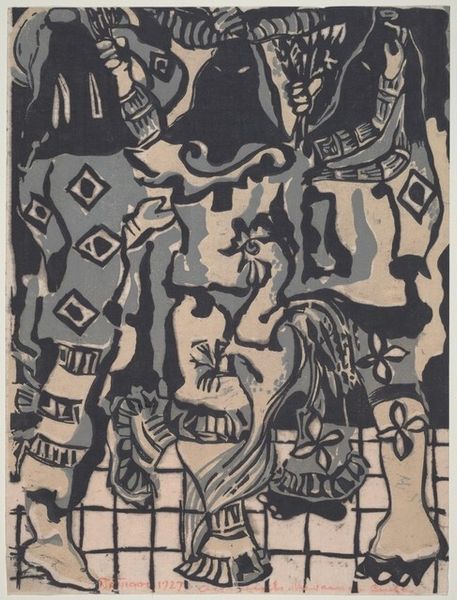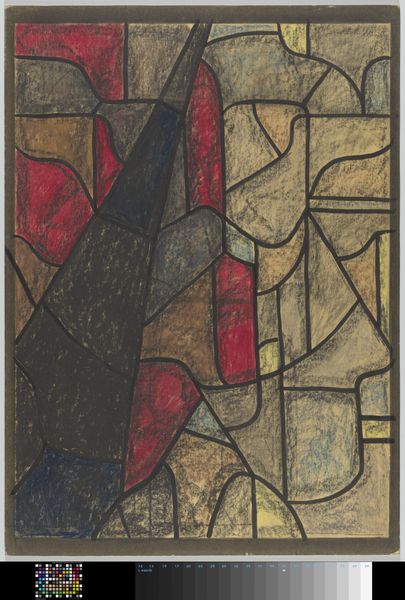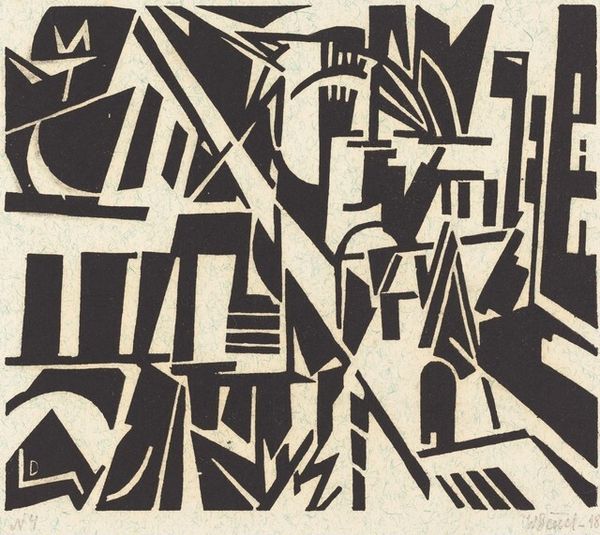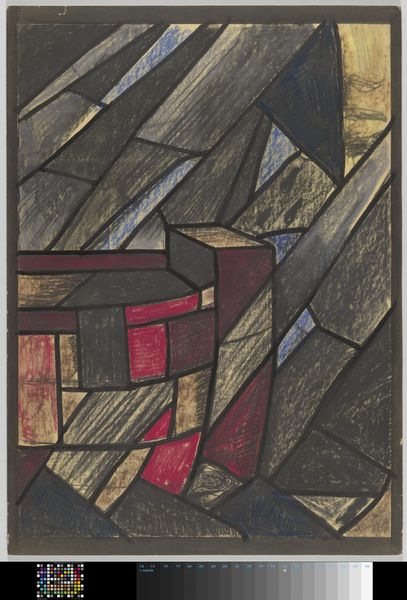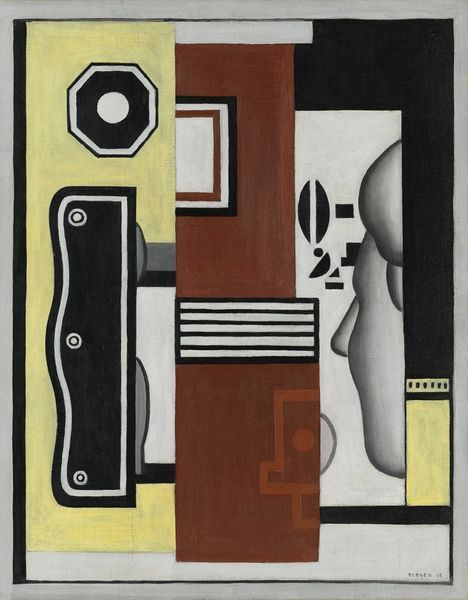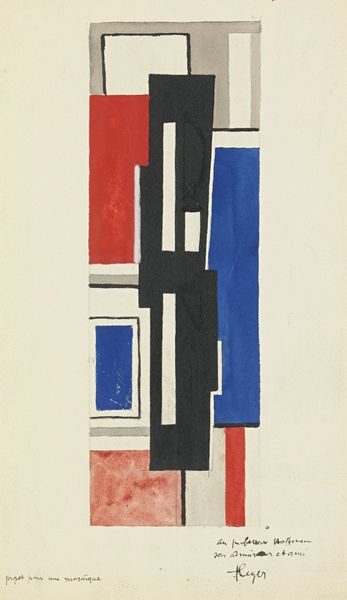
Dimensions: overall: 16.6 x 11.5 cm (6 9/16 x 4 1/2 in.)
Copyright: National Gallery of Art: CC0 1.0
Editor: This is Joaquín Torres-García’s "Port of Uruguay" from 1933, a work combining watercolor, collage, and drawing. I find the rigid geometry and distinct color blocks quite striking. What can you tell me about it? Curator: Let's consider this work within the context of industrial modernity. Torres-García's use of collage is very interesting because it literally introduces materials and processes associated with everyday life into the supposedly elevated sphere of fine art. The lines and colors are reminiscent of navigational charts. How do you think the production of nautical knowledge influences the piece? Editor: I hadn’t thought of that. I guess the clean lines suggest precision, almost like architectural blueprints. Did the materials he used impact the availability or audience of the work? Curator: Absolutely. Collage, watercolor, and drawing were often viewed as 'lesser' media compared to oil painting. His choice democratizes art-making by utilizing inexpensive materials and skills accessible outside of formal academic training. By merging 'high' art composition with materials tied to the everyday, he collapses those artificial divisions. It provokes questions of accessibility and challenges what’s traditionally valued as ‘art’. Do you agree? Editor: That's a great point. I see how using such ordinary materials actually empowers the artwork and comments on artistic conventions. I appreciate that he democratized the art experience by challenging what we value as ‘fine art’. Curator: It makes you consider what elements define a piece of art as prestigious and how those judgements might marginalize work which makes different material and process choices. Editor: Precisely! I'll definitely look at collage and mixed-media works differently from now on. Thanks for sharing your perspective.
Comments
No comments
Be the first to comment and join the conversation on the ultimate creative platform.
